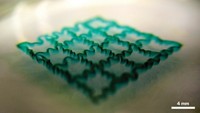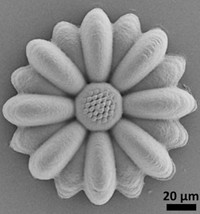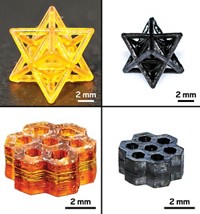Advertisement
Grab your lab coat. Let's get started
Welcome!
Welcome!
Create an account below to get 6 C&EN articles per month, receive newsletters and more - all free.
It seems this is your first time logging in online. Please enter the following information to continue.
As an ACS member you automatically get access to this site. All we need is few more details to create your reading experience.
Not you? Sign in with a different account.
Not you? Sign in with a different account.
ERROR 1
ERROR 1
ERROR 2
ERROR 2
ERROR 2
ERROR 2
ERROR 2
Password and Confirm password must match.
If you have an ACS member number, please enter it here so we can link this account to your membership. (optional)
ERROR 2
ACS values your privacy. By submitting your information, you are gaining access to C&EN and subscribing to our weekly newsletter. We use the information you provide to make your reading experience better, and we will never sell your data to third party members.
Materials
Chemistry In Pictures
Chemistry in Pictures: Magnetic flytrap
by Manny I. Fox Morone
September 30, 2020
Haven’t we all felt like this fly—seemingly helpless while being whacked several times a second by a flappy-fingered flower? At work here is the research of a team of collaborators from Johannes Kepler University Linz and Helmholtz-Zentrum Dresden-Rossendorf trying to make soft robots that can move quickly. Unlike robots that use tethered power sources to move, like a wire carrying electricity, this elastic flower is free-standing and closes and opens when the researchers put it in a fairly weak oscillating magnetic field. For comparison, the magnetic field of a refrigerator magnet is about 5–10 times as strong as the field moving this flower. The material is fairly simple: the researchers mix poly(dimethylsiloxane) and neodymium-iron-boron microparticles and then magnetize the resulting elastic material, so it behaves as if it’s stuffed with a bunch of tiny magnets. By cutting out their desired shapes, the team aims to make, for example, fast-moving grabbers for manipulating biological tissues.
Credit: Xu Wang, Guoyong Mao, Denys Makarov, Martin Kaltenbrunner. Read the paper in Communications Materials (2020, DOI: 10.1038/s43246-020-00067-1)
Do science. Take pictures. Win money. Enter our photo contest here.






Join the conversation
Contact the reporter
Submit a Letter to the Editor for publication
Engage with us on Twitter